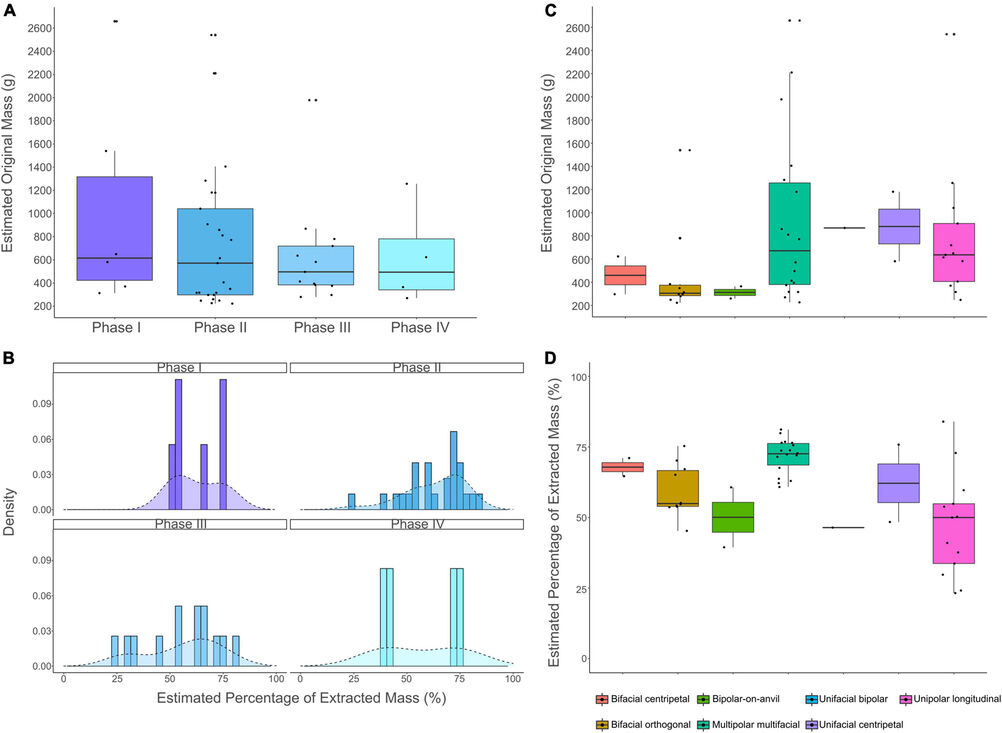The technology of the first hominins allowed them to adapt to environmental changes 2 million years ago
Early hominins developed the Oldowan technology, that enabled them to deal with the environmental changes that affected their ecosystems for over 200,000 years. This technological efficiency allowed them to adapt to different ecological environments.
This is one of the main conclusions reached by an international team led by Arturo Cueva-Temprana, researcher at the Max Planck Institute for the Science of Human History in Jena, with the participation of several national institutions (Institut Català de Paleoecologia Humana i Evolució Social (IPHES-CERCA), the MIAS-Universidad Autónoma de Madrid), and African(University of Dar es Salaam), Australian (University of Queensland, Griffith University), American (National Museum of Natural History, Smithsonian) and Canadian research centers (University of Calgary, from where the Stone Tools, Diet and Sociality project is led) and which has been recently published in the prestigious journal Frontiers in Ecology and Evolution.
These conclusions have been obtained from the technological analysis of the lithic assemblages recovered at Ewass Oldupa (meaning 'on the way to the gorge' in the local Maa language). This site was occupied since 2.03 million years ago and represents the first human occupation identified in the Olduvai (now Oldupai) Gorge, in the Great Rift Valley (Tanzania), one of the most important paleoanthropological sites in the world. The interventions carried out during 2018 and 2019, have allowed to document a sequence of five occupational phases covering approximately 200,000 years (2.03-1.83 Ma). Among the archaeological record, the oldest stone tools found in Oldupai stand out, with an age of 2 million years. Along with the tools, bone remains of large mammals (hippopotami, panthers, lions, hyenas and primates), as well as reptiles and birds were also recovered.
Previous multidisciplinary studies suggest that this area underwent drastic environmental changes during this period, with environments changing rapidly from fern meadows to forest mosaics, naturally burned landscapes, lake forests and palm groves, as well as steppe-like landscapes.
This study has demonstrated that hominins did not change either the type of tools used or the way they produced them over time despite these environmental changes.
In addition, the application of new quantitative methods, such as the Volumetric Reconstruction Method, developed by Dr. Diego Lombao from IPHES-CERCA, has allowed to document that "the way of producing stone tools is closely linked to the size of the raw material used, which would indicate that hominins adapted their toolkit to the limitations of size, shape and quality of the raw materials" according to Lombao.
Despite this relatively simple strategy in terms of technical capabilities, these analyses have documented a very high reduction intensity, which shows that "the way of producing tools was efficient and successful".
In summary, the results obtained in this research, together with the extensive geographic range and time span covered by this type of technologies, suggest that the Oldowan constitutes a versatile adaptive technology, which required no more than minor adjustments to effectively meet the ecological demands of the different types of environments.
Reference:
Cueva-Temprana Arturo, Lombao Diego, Soto María, Itambu Makarius, Bushozi Pastory, Boivin Nicole, Petraglia Michael, Mercader Julio (2022) Oldowan Technology Amid Shifting Environments ∼2.03–1.83 Million Years Ago. Frontiers in Ecology and Evolution, 10 D10.3389/fevo.2022.788101
https://www.frontiersin.org/article/10.3389/fevo.2022.788101



